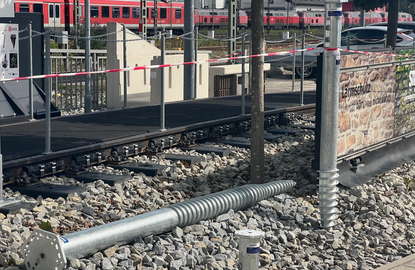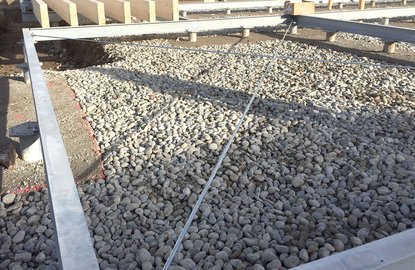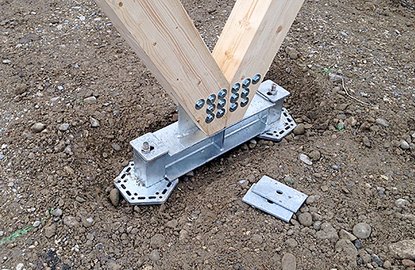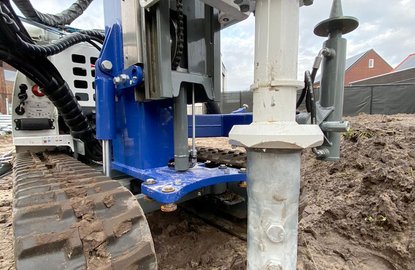Where do ground screws get their stability from?
Where do ground screws get their stability from?
The principle of screws in the floor
Ground screws are a type of displacement pile and are therefore based on one of the oldest forms of foundation construction – pile foundations, which have been used for thousands of years. As opposed to earlier versions made from wood, ground screws are galvanised steel pipes with a welded-on thread which is designed to support horizontal and vertical loads in the floor and is installed with the help of a ground screw driver. Using this type of foundation rids you of the need to displace any earth when building.
In principle, the ground screws work in exactly the same way as a standard screw would in the wall with a wall plug or when driven into a piece of wood. When the screw is driven in with some force, an interlocking connection forms between the screw and the wood. In this case, interlocking means that the screw interlocks with the wood and is firmly fixed into place.
If you drive a ground screw into the ground with sufficient clamping pressure, the interlocking happens in the same way. The welded thread helps the foundation to positively interlock with the ground. In addition, when the ground screw is driven in, the earth is displaced and compacted, causing an additional frictional connection between the ground and the shaft of the ground screw. Frictional connections are caused by frictional forces, which in this case is the surface friction between the steel pipe and the ground.
The ground does all the hard work
It’s clear that the ground is a crucial factor with regards to the load-bearing capacity of the ground screws. The interaction between the screws and the subsoil is what makes the ground screws work as foundations. As such, the ground defines the outer load-bearing capacity of the foundations, and the screw the inner load-bearing capacity.
A soil survey is essential in order to evaluate the outer load-bearing capacity of the foundations. This survey can also provide insight into what different soil types there are on the construction site, what the consistency of the soil is like and where the load-bearing layers are located. Not all floors are equally suitable for carrying loads, there are many different factors that have an influence here. These can include the composition of individual soil elements, the density of the bedding and any possible groundwater movements. With this information, the data about the load to be placed on the foundations and the performance data for the ground screws, the foundation layout can be calculated and planned. Load-bearing tests also give an insight into the actual load-bearing capacity of the construction site. A load-bearing test must be carried out to provide proof that the construction site is suitable before any project planning can begin.
Professional installation is important
Another important factor with regards to the load-bearing capacity of the foundation lies in the technology used for the installation. There is a wide variety of machines available to aid with the installation. They range from electric ground screw drivers, to hydraulic excavator add-ons, to self-driving caterpillars with drilling attachments. Regardless of the machine type, they all have one thing in common: they must be operated by an experienced and professional machine operator.
As when it comes to the correct driving in of the ground screws there are many different things that must be taken into consideration. For example, care must be taken to ensure that the screws are evenly driven in with sufficient clamping pressure. You also need to keep an eye on the torque and the level to ensure a perpendicular installation of the ground screws. Any tilting or imprecision in the installation can have a negative impact on the load-bearing capacity, as can an upward movement of the soil. Still, it’s relatively easy to learn how to install ground screws and, if you follow the manufacturers installation recommendations, easy to do.
Summary
With ground screws, it’s the same as with any other type of foundation. The right products, suitable soil and installation expertise must all be brought together to create a safe and secure foundation. Ground screws are not only incredibly safe, but they are also an innovative and soil-friendly alternative to other traditional types of foundation. This means that they can be used for a wide range of different applications, from road signs and advertising displays, to terraces, carports and residential buildings. For this, KRINNER manufactures a large range of ground screws and suitable ground screw drivers for any installation requirement.


























